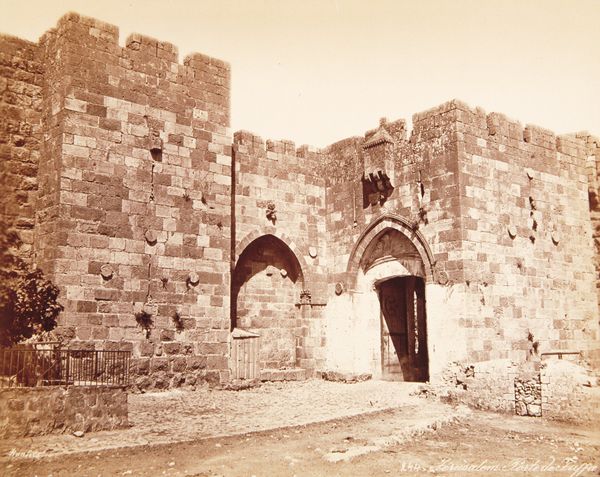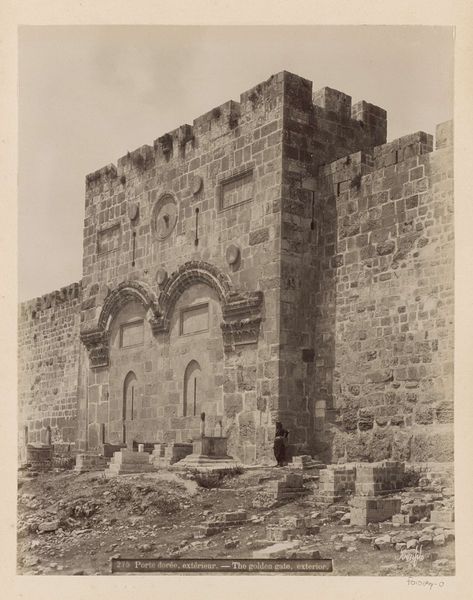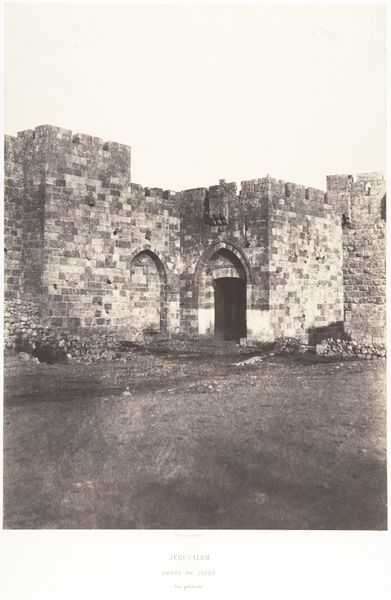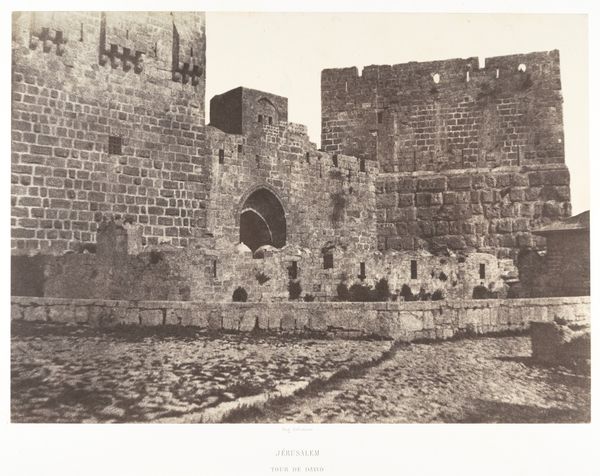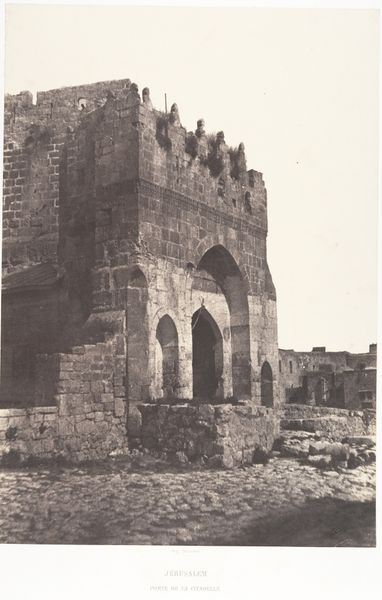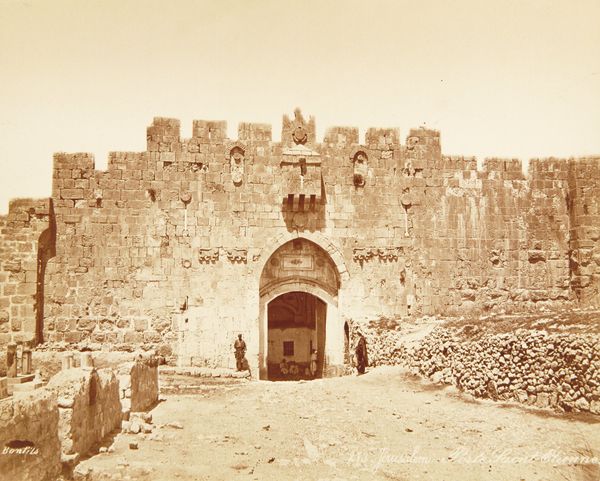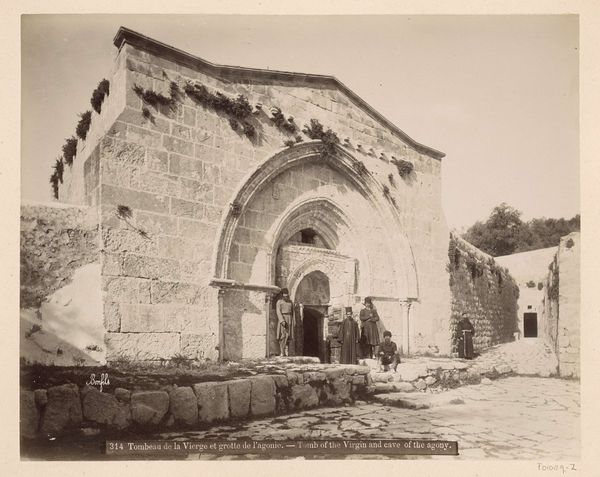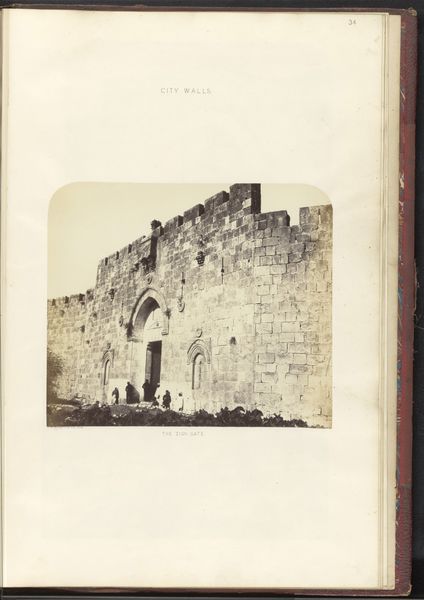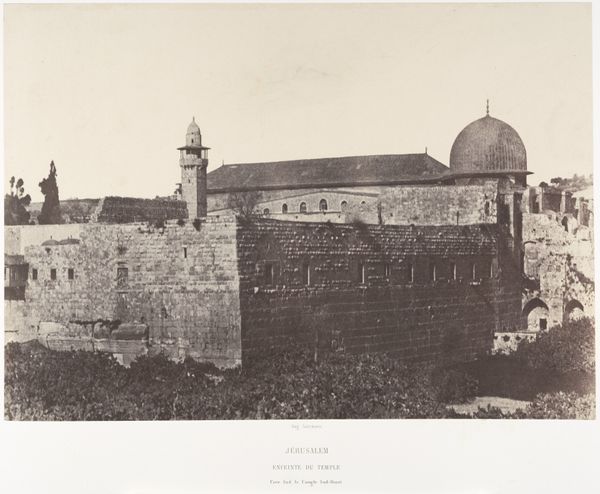
albumen-print, photography, albumen-print, architecture
#
albumen-print
#
landscape
#
historic architecture
#
photography
#
ancient-mediterranean
#
france
#
albumen-print
#
architecture
#
realism
Dimensions: 11 1/8 x 8 3/4 in. (28.26 x 22.23 cm) (image)14 x 11 in. (35.56 x 27.94 cm) (mount)
Copyright: Public Domain
This albumen print of the Porte dorée in Jerusalem was made by Félix Bonfils sometime in the late 19th century, using a process that would have been considered cutting-edge at the time. The albumen process, named for the egg whites used to bind the photographic chemicals to the paper, allowed for finely detailed and richly toned prints. Bonfils would have carefully coated paper with the albumen solution, exposed it to a negative under sunlight, and then processed it to reveal this sepia image. What's fascinating is how this technical process intersects with the social context. Photography like this became a tool for Westerners to document and, in a sense, possess the Middle East. Bonfils himself catered to a tourist market eager for views of exotic locales. The production of these images involved a whole chain of labor, from the sourcing of materials to the darkroom work, all contributing to a visual representation of a place and culture far removed from the consumers of the photograph. Considering both material and context helps us understand the complex layers of meaning embedded within a seemingly straightforward image.
Comments
No comments
Be the first to comment and join the conversation on the ultimate creative platform.
